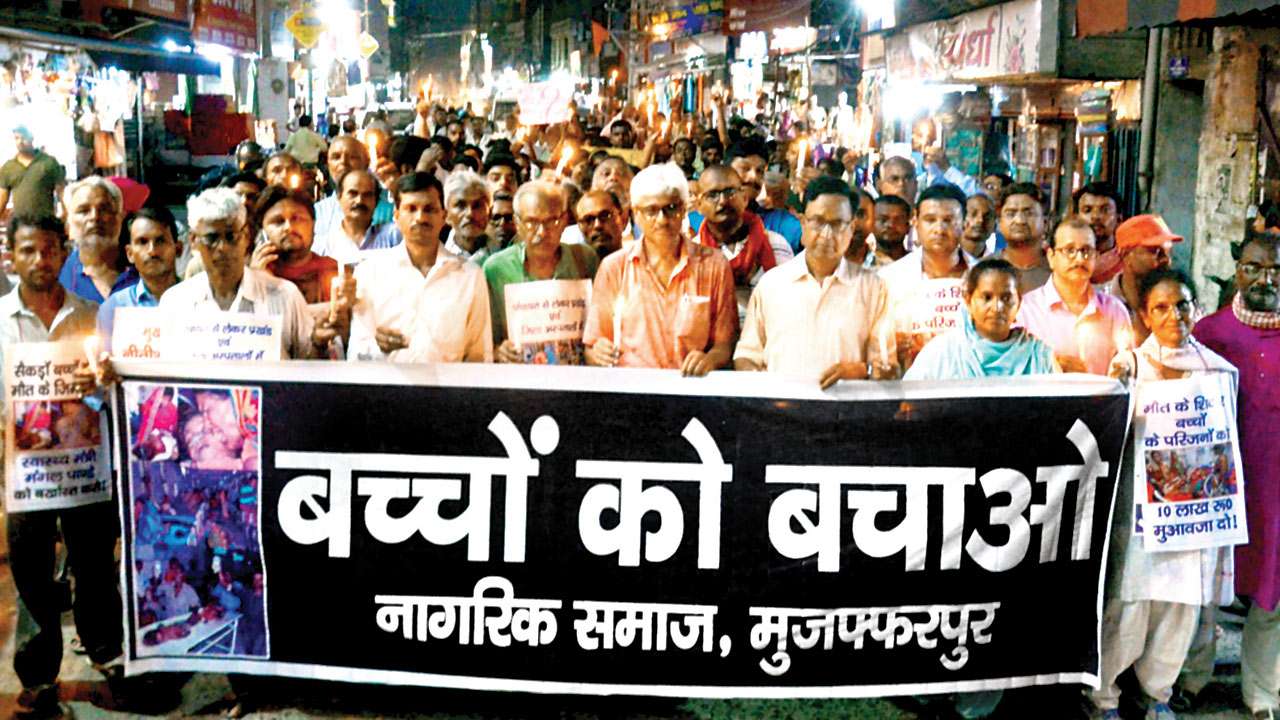
There can be no keener revelation of a society’s soul than the way in which it treats children. So said Nelson Mandela, and India’s latest episode of officially nearly 150 children dying in Muzaffarpur, Bihar, takes us back to these thoughts.
As summer arrives every year, children in the Indo-Gangetic plain, especially from the most underprivileged, keep dying.
No heads roll, shining India continues to aspire for a 2030 space station, bullet trains or hyperloops occasionally vetted by its multi-billion dollar sports economy adding to the sheen of that visceral celebration.
Heart wrenching it may be, but children after all are children, useless to societies rationally perhaps and dispensable, especially if they come from the poorest of the poor – thus they die.
Such a hypothesis, surprisingly, is not just a skeptic’s rant, but actually has historical support. In a fascinating book Pricing the Priceless Child: The Changing Social Value of Children, Princeton sociologist Viviana A Zelizer, pointed out that in the Western world similar apathy was common place to the deaths of children between the 16th and 19th century.
Among other points (related to the value of a child rising with participation in the labour force), Zelizer also cites the work by Edward Shorter, a University of Toronto historian of medicine, who discusses children in Europe being considered as a rational investment and hence their death not being mourned much through the 16th to the 19th century.
Traditional mothers may not have cared much, Shorter argued. However, things changed thereafter, which is where Shorter proposed a better love hypothesis when mothers learned to love properly, this bringing about declines in child mortality in the late 19th and much through the 20th century.
A classic example of this learning comes from the 1937 Danish Universal Home Visiting Programme, which, recent work in economics has shown, has long-term effects on improving infant health.
Meanwhile in the US, Zelizer reminds us that what aided declines in infant mortality was the formation of the Children’s Bureau in Washington DC, and the leadership by bureau chief Julia Lathrop to result in the 1921 Sheppard-Towner Maternity and Infancy Protection Act (STMIA).
STMIA, which later on inspired the US Social Security Act of 1935, requested appropriations in the amount of $5,000 per state followed by an additional $1.5 million to be distributed annually thereafter as part of a federal matching grant programme.
States would use the one-time grant to design and set up programmes to educate women on prenatal health and the proper care of infants, and after that, any state funding would be matched dollar-for-dollar by federal funds provided under STMIA. The Children’s Bureau became the overseer and administrator of STMIA.
Interestingly, STMIA was opposed by the American Medical Association (but not by its sub-associates, the American Association of Pediatrics) and they were influential in finally removing the Act by 1929.
However, it had created an impact by the time it was gone, as a 2019 paper by Stanford and Harvard economists Marcella Alsan and Claudia Goldin shows.
They discuss that along with effective water and sewerage infrastructure diffusion in US from that period, public health interventions like STMIA also played an important role in reducing infant mortality.
This is also supported by a book, Saving Babies: American Public Health Reform by Brown University historian Richard Meckel and also by economic research from Carolyn Moehling and Melissa Thomasson in a 2012 paper.
Are there lessons for India from the better love hypothesis, the Danish Universal Home Visiting programme and the 1921 US STMIA? The answer seems obvious. The country could do well to invest in a universal home visiting programme, also by forming a Children’s Bureau and the implementation of a top-down Maternity and Infancy Protection Act (a la the American Sheppard-Towner Act) with urgent priority.
A 2018 UN estimate reminded us that while infant mortality may have declined in India over time, among a cross-section of countries with 8,02,000 infants dying in 2017, India bested the list beating Nigeria at 4,66,000, Pakistan at 3,30,000 and the Democratic Republic of Congo at 2,33,000.
In fact, in Gorakhpur alone 25,000 children have lost their lives due to vaccine-preventable encephalitis over the last four decades.
This is more than a shame since India also has a very robust Universal Immunisation Programme and a vibrant domestic vaccine manufacturing sector to supplement its ever-expanding, but somehow low uptake-ridden Universal Health Coverage (UHC) programmes, where the latest venture in town is Ayushman Bharat.
Sure efforts on deepening rural electrification, sanitation and drinking water availability should continue, so should expenditure on public health increase.
Efforts should also continue on ramping up deployment of healthcare professionals per patient, or to encourage entrepreneurial efforts (like with the Economist awarded Embrace baby warmers or with infant biometric identity efforts like Infant-Prints, an infant ID system being created by Michigan State University and Saran Ashram Hospital, Agra’s researchers).
But the time for consolidating all these fragmented efforts with a mission driven top-down approach and an Indian Sheppard-Towner Act may have arrived. Only if society cares though, as Mandela pointed out.
The author is from IIM-A and Hoover Institution